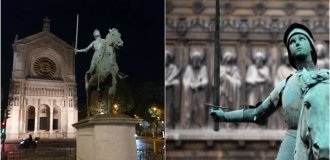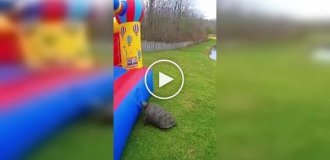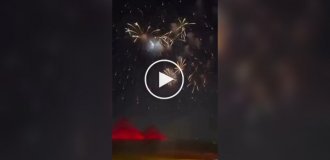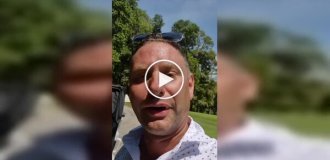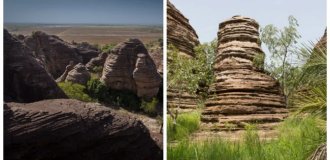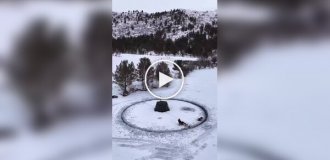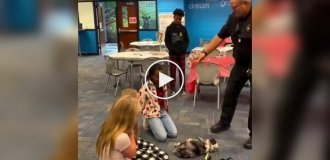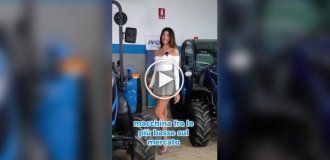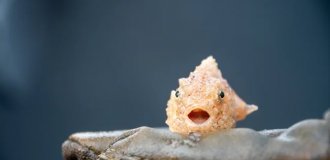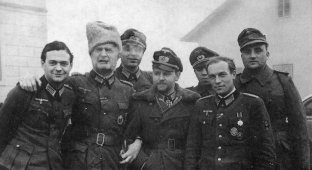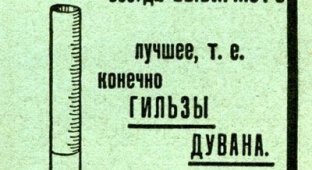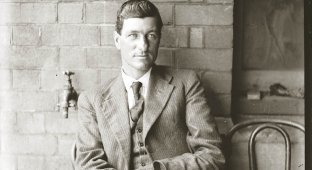During the Great Caucasian War of the 19th century, a kind of Cossack special forces operated effectively - plastuns (from the word plast, that is, lying in a layer) - foot teams and units of the Black Sea, and then the Kuban Cossack army
The main task of the Plastuns was to protect the villages from a sudden attack by the Caucasian highlanders. For this purpose, they were instructed to continuously monitor the cordon line from secret secret places, to lie as a kind of living trap on the paths of possible enemy penetration into the depths of the Cossack lands.

SPECIAL PURPOSE TEAMS
However, the tasks of the plastuns were not limited to one observation from stationary points. In the hot summer and harsh winter, they carried out raids on enemy soil, patrolled along both banks of the Kuban, discovered unknown paths in the swamps and fords in the border river, marked such places with marks known only to them, uncovered traces, and promptly discovered preparations for the raid. Having chosen an opportune moment, the plastuns carried out, in today’s terminology, “precision” attacks on small detachments of highlanders who intended to commit a predatory raid, destroyed their leaders, stole herds of horses, thereby limiting the enemy’s mobility.
At first, the plastuns were located along the line in small groups, as they were then called, “partnerships” or “batteries.” Each battery was assigned a small signal cannon, from which an alarm shot was fired when an enemy was detected raiding in large forces. In 1842, Plastun teams of 60 and 96 people each, respectively, were included in the staffing lists of the cavalry regiments and foot battalions of the Black Sea Cossack Army. They had more modern weapons than other Cossacks; in particular, they were the first to receive long-range rifles with fixed bayonets. Taking into account the specifics of the difficult and dangerous service, the plastuns were assigned an increased salary compared to other Cossacks.
The fighting traditions and tactics of the Plastuns have evolved over centuries. During the campaign they were in an advanced reconnaissance patrol, and at a halt they were in an ambush in a combat guard. In the field fortification - in constant search through the surrounding forests and gorges. At the same time, at night, plastuns in groups of 3 to 10 people penetrated deep into the enemy’s location, watched him, and eavesdropped on conversations.

The Plastuns dressed like highlanders, and like the poorest. Each search through the gorges and wilds thoroughly wore out the uniform. The Plastun's traveling attire consisted of a shabby Circassian coat, covered with multi-colored patches; a worn, tan fur hat, usually twisted jauntily at the back of the head; boots made of wild boar skin, with bristles facing outwards. In his hands is a trusty fitting with a cleaver, on his belt is a dagger and the so-called personal belongings: a powder flask, a bag for bullets, a grease can, an awl made from a wild goat horn, a bowler hat. They also took hand grenades with them on the search (if the enemy pressed them, they lit the wicks and threw grenades at him, and God bless their legs). Sometimes the equipment was supplemented with a balalaika or violin - to entertain yourself and your comrades in rare moments of rest.
In the interests of secrecy during reconnaissance, plastuns were even allowed to wear a dyed beard. Many of them knew local dialects, manners and customs. In some villages, the Plastuns had friends - kunaks, who informed them of the enemy’s plans. However, information received even from the most bosom Kunak friends was always subject to careful verification.

THE BEST OF THE BEST
Plastuns were also brought in to unblock Cossack fortifications besieged by the enemy. This was the case, for example, when the highlanders, numbering about three thousand people, attempted to capture the Crimean fortification, located behind the cordon line on the Kuban River. Ataman Babich sent 40 plastuns to help the garrison.
The commander of the detachment, Cossack Kryzhanovsky, decided to draw off as many of the attackers as possible. He dispersed and sheltered the plastuns on the river bank behind tree trunks brought during the spring flood. Accurate fire from the riflemen inflicted significant losses on the enemy. Attempts by the mountaineers on horseback and on foot to crush a handful of brave men did not bring success. After a two-hour battle, the plastuns, in cooperation with the fortification garrison, forced the enemy to retreat to their territory.
During a combat encounter during a reconnaissance raid, plastuns were almost never given into the hands of the enemy. It was considered a rule that a plastun would rather lose his life than his freedom. Having skillfully chosen a position and mapped out escape routes in advance, in case of pursuit, the plastuns fired back or silently took cover in the area. In both cases, the enemy was afraid to immediately openly attack a small detachment of scouts, knowing the accuracy of a Plastun shot and the danger of an ambush. Having thus knocked down the "courage" of the pursuers, the plastuns retreated. The wounded were not abandoned in trouble, the dead were buried on the spot or, if possible, taken away with them.
Experienced plastuns were excellent psychologists. For example, young people were taught that in reconnaissance, when meeting with the enemy one-on-one, “even the bravest of the highlanders will not refuse to chicken out a little if no one is looking at him, if there are no witnesses with long tongues. When it is not about prey, the highlander loves , so that the bright sun shines on his feat, so that if not forty centuries, then forty fellow countrymen, who, of course, have forty languages, look at him.” Therefore, in such a situation, the veterans said, the highlander is unlikely to escalate on his own initiative and will most likely avoid a collision with an armed Cossack ready for battle.
A peculiar system of selection for plastuns has developed. Cossacks were not appointed to Plastun teams, but were chosen by “old men” from among reliable and proven warriors. They tried to take young recruits from proven and reliable Plastun dynasties, in which the secrets of fighting and hunting were inherited from grandfathers and fathers. Only Cossacks who were capable of difficult Plastun service and, in addition to natural prowess and courage, had a faithful eye and a steady hand for shooting without missing could pass the meticulous selection.
Particularly stringent requirements were imposed on physical training. Plastun had to be able to make long marches in mountainous and wooded areas, in cold and heat, well-fed and hungry. Qualities such as composure and patience were considered obligatory in order to lie in the immediate vicinity of the enemy for many hours in the reeds, bushes and grass, often in icy water, in the snow or in the summer in clouds of annoying midges, without exposing one’s presence by careless movement.
The tactics of the plastuns' actions fully corresponded to the tasks assigned to them, the nature of the terrain, and the characteristics of the enemy. Contemporaries defined it as “a wolf’s mouth and a fox’s tail.” In searching behind enemy lines, the main thing was to ensure the secrecy of one’s own movements, to be the first to detect the enemy, and to skillfully lure him into an ambush. The Cossacks did not stay with the Plastuns because they did not know how to clean up their own trail, who had not mastered the art of silent movement through reeds and dead wood. People who were able to read the tracks and determine from them the composition of the participants in the impending raid and the direction of their movement were valued.
Having crossed over to the enemy’s side, the plastuns disappeared. And when treacherous tracks followed them along the dewy grass or snow crust, they skillfully confused them, cunningly, like old hares: they moved forward with their backs, jumped on one leg, in every possible way concealed the true direction of movement and the size of the group.
Born hunters, Plastuns skillfully applied many hunting rules in confrontation with the enemy. For example, “pursue with caution.”

AND NOT ONLY IN THE CAUCASUS
The outstanding qualities of the Plastuns served the Fatherland not only in the Caucasus, but also in other theaters of military operations. In the Crimean War (1853-1856), the 2nd and 8th Cossack Plastun battalions distinguished themselves in the battles of Balaklava and in the defense of Sevastopol on the legendary fourth bastion. The Plastuns carried out forays into the enemy’s trenches, with special accuracy, characteristic only of them, they removed sentries, destroyed guns, and once captured and, with the help of French prisoners, dragged away three enemy mortars. While on patrol, secret missions, and reconnaissance searches, the Plastuns paid attention to many seemingly insignificant details in the enemy’s activities. New artillery positions were discovered and work was being discovered to dig tunnels with the aim of laying mines under the location of Russian troops.
Looking at the Plastuns, the commanders of the army infantry regiments in Sevastopol began to create special teams based on their model. They selected the bravest and most shrewd soldiers, gave them rifles, which were rare in regular troops at that time, and sent them out on night patrols. The soldiers adopted their skills and habits from the experienced plastuns, and even began to imitate their clothes.
The plastuns Kravchenko, Chizh, Bely, Onishchenko, the Sopelnyaki brothers, and Semak distinguished themselves in Sevastopol and were awarded. The 2nd Kuban Plastun battalion was awarded the St. George Banner with the inscription “For exemplary distinction in the defense of Sevastopol in 1854 and 1855”, the 8th battalion was awarded the St. George Banner with the inscription “For distinction in the capture of the Anapa fortress on June 12, 1828 and exemplary courage in the defense of Sevastopol 1854 and 1855."

Plastun units took part in the Russian-Turkish, Russian-Persian, Russian-Polish and Russian-Japanese wars. Twenty-four Plastun battalions fought on the fronts of the First World War. On the Caucasian front, reconnaissance groups of Plastuns penetrated into Mesopotamia (in the territory of present-day Iraq), where they established contact with the advanced units of British troops allied to Russia. In this war, there were two changes in the mounted Cossack regiments, and three in the Plastun battalions...
In the Great Patriotic War, the name “Plastun” was traditionally given to some Cossack battalions, regiments and the Krasnodar Plastun Rifle Division.
Apparently, in our days, in order to maintain the continuity of traditions, it would be worth thinking about assigning the honorary name “Plastunsky” to distinguished special forces units.
